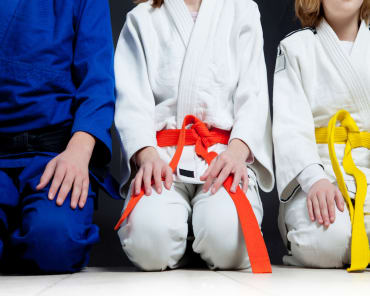
Brazilian Jiu-Jitsu (BJJ) is a complex martial art with an extensive repertoire of techniques. For beginners and experienced practitioners alike, mastering fundamental techniques is essential for success on the mats. Here’s a breakdown of ten essential BJJ techniques every practitioner should know, covering their applications, mechanics, and key tips for execution.
1. Rear Naked Choke (RNC)
Overview: The Rear Naked Choke is one of the most effective submissions in BJJ. It involves wrapping your arm around your opponent's neck from behind and applying pressure.
Key Points:
- Positioning: Secure a dominant position by taking the back of your opponent.
- Grip: Use a deep grip with one arm across the neck and the other arm behind the head.
- Finishing: Squeeze your elbows together and apply pressure to choke.
2. Armbar
Overview: The armbar is a powerful joint lock that hyperextends the elbow joint, commonly executed from guard or mount.
Key Points:
- Setup: Use a sweep or pass to establish a dominant position.
- Execution: Secure the opponent's arm, pivot your hips, and extend the leg closest to their head.
- Finishing: Keep the arm tight to your chest and pull back on their wrist while pushing your hips forward.
3. Triangle Choke
Overview: The Triangle Choke is a submission that utilizes your legs to create a choke while trapping your opponent’s arm.
Key Points:
- Setup: Use guard to create an angle by shifting your hips.
- Execution: Lock your legs in a triangle around their neck and one arm.
- Finishing: Pull down on the head while squeezing your legs together and pushing your hips upward.
4. Guillotine Choke
Overview: The Guillotine Choke is a versatile submission that can be executed from various positions, especially when your opponent attempts to shoot for a takedown.
Key Points:
- Setup: Engage when your opponent lowers their head for a takedown.
- Execution: Wrap your arm around their neck and grip your wrist or arm.
- Finishing: Pull upwards while arching your back to apply pressure on their throat.
5. Kimura
Overview: The Kimura is a shoulder lock that can be performed from various positions, including guard, side control, and mount.
Key Points:
- Setup: Isolate your opponent’s arm by controlling their wrist.
- Execution: Rotate their arm behind their back while maintaining control of their wrist.
- Finishing: Keep your body close to theirs to maximize leverage and apply pressure to the shoulder.
6. Hip Escape (Shrimping)
Overview: The hip escape, or shrimping, is a fundamental movement that allows you to create space and escape from bad positions.
Key Points:
- Execution: Lie on your back and push off with your feet while shifting your hips away.
- Application: Use this movement to escape from mount, side control, or establish a guard position.
- Repetition: Practice this movement frequently to develop fluidity and speed.
7. Guard Pass
Overview: Guard passing is essential for advancing to a dominant position. It involves maneuvering around your opponent's legs to establish control.
Key Points:
- Types: Familiarize yourself with various guard passes, such as the knee slice, torreando, and over-under pass.
- Control: Maintain pressure and control their hips to limit their movement.
- Follow Through: Transition to mount or side control after passing the guard.
8. Cross Collar Choke
Overview: The Cross Collar Choke is a classic submission from the guard position that targets the opponent’s neck.
Key Points:
- Setup: Grip your opponent’s collar with both hands, one higher and one lower.
- Execution: Pull down on the collar while pushing your elbows together.
- Finishing: Maintain tension in your grip to apply pressure and secure the choke.
9. Scissor Sweep
Overview: The Scissor Sweep is a fundamental sweep that allows you to reverse your opponent from the guard position.
Key Points:
- Setup: Create an angle by controlling one of your opponent’s arms.
- Execution: Use your legs to scissor and sweep them over while maintaining upper body control.
- Transition: Follow up by establishing a dominant position on top.
10. Knee on Belly
Overview: Knee on belly is a dominant position that applies pressure on your opponent while controlling their movement.
Key Points:
- Setup: Transition to knee on belly from side control or after a successful guard pass.
- Execution: Place your knee on your opponent's belly while keeping your other foot planted for balance.
- Pressure: Use your weight to apply pressure and limit their ability to move or escape.
Conclusion
Mastering these ten essential techniques is vital for any Jiu-Jitsu practitioner, whether you're just starting or looking to refine your skills. Each move offers valuable lessons in leverage, timing, and control, which are fundamental to your development in BJJ. Remember, practice is key—drill these techniques regularly, seek feedback from instructors, and always focus on improving your execution. With dedication and consistency, you'll become a more effective and confident practitioner on the mats.






